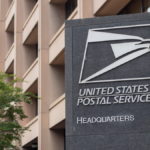Enhancing Account Security with Multi-Factor Authentication
Implementing two-factor authentication (2FA) provides a significant enhancement to the safety of your online accounts. Nonetheless, cybercriminals continue to develop methods to bypass these protections. One common technique known as an adversary-in-the-middle attack exploits vulnerable authentication practices to gain unauthorized access. Thankfully, there are proactive measures that can strengthen your security further.
Understanding Multi-Factor Authentication
Multi-factor authentication (MFA) involves multiple stages of verification to ascertain the identity of an individual attempting to access an account or system. This approach is far superior to relying solely on a username and password, especially considering how easily many passwords can be breached and the number that have already appeared on the dark web. Many users employ simple, repetitive passwords, leading to significant risks across multiple accounts once one password is compromised. Thus, creating strong and unique passwords for each account is crucial.
MFA elevates security beyond merely utilizing a password. After entering a password, users must provide at least one additional form of confirmation—ideally something uniquely theirs. This could take the form of a knowledge factor (like a PIN), a possession factor (a code from an authentication app), or an identity factor (such as a fingerprint).
It’s important to note that although 2FA and MFA are often viewed as synonymous, they are not identical. Two-factor authentication primarily uses two distinct elements to confirm a user’s identity, which could include a password and a security question or SMS code. In instances of 2FA, both factors may consist of something the user knows, which poses additional risks.
MFA necessitates at least two independent factors: combining a knowledge factor like a password with a biometric authentication or a secure key, for example. Generally, the inclusion of more verification factors leads to heightened account security. However, if all these factors reside on a single device, the overall security may be jeopardized if that device is compromised, lost, or stolen.
Vulnerability of MFA
While enabling MFA offers a sense of security, it is essential to recognize that certain MFA methods are nearly as vulnerable as traditional username and password combinations.
According to Ars Technica, specific knowledge and possession factors can themselves fall prey to phishing exploits. The adversary-in-the-middle attacks specifically target authentication codes, including those dispatched through SMS or email, along with time-sensitive one-time passwords from authentication apps. This enables hackers to usurp access to your accounts through factors you may unwittingly reveal.
The attack unfolds as follows: malicious actors might notify you that your Google account, for example, has been compromised, providing a link to log in and secure it. The link appears legitimate, as does the resulting page, but it is actually a phishing attempt linked to a proxy server. The proxy captures the credentials you enter, sending them to the actual Google site and activating a legitimate MFA request. If you input your authentication code on the phishing page or confirm a push notification, you inadvertently grant the hacker entry to your account.
Adversary-in-the-middle tactics are facilitated even more so by readily available phishing-as-a-service toolkits in various online forums.
Ways to Enhance MFA Security
To optimize MFA effectiveness, it would be prudent to transition from using SMS codes and push notifications to more resilient authentication methods that can withstand phishing attempts. The most secure choice is to implement MFA that utilizes WebAuthn credentials (such as biometrics or passkeys) stored directly on your device’s hardware or employing a physical security key like YubiKey. This type of authentication operates solely at the genuine URL and in close proximity to the device, making adversary-in-the-middle attacks virtually impossible.
In addition to upgrading your MFA methods, it is vital to remain vigilant against common phishing indicators. Just like traditional phishing tactics, MFA-specific attacks often exploit users’ emotions or fears concerning their account security, creating a false sense of urgency. Always avoid clicking on unfamiliar links, and take the time to verify any security concerns before acting upon them.












